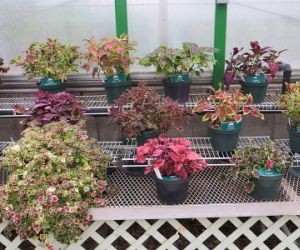Investing in the landscaping of your home is one of the best ways to stand out in your new community. Having the best curb appeal doesn’t have to take up all of your time and money, and when you utilize Florida-friendly plants, you don’t necessarily need a green thumb for them to thrive.
This list of ten affordable and environmentally-safe landscaping tips showcases great ways to add flair to your new home without taking you away from basking in the beautiful summer sun!
- Skip the Fertilizer: All of the Florida rain can wash fertilizer into bays, lagoons, rivers, lakes and oceans. Since residents, tourists and animals spend a lot of time in the water during the summer months, reduce fertilizer pollution going into the water! In places like Tampa, the soil has plenty of phosphorous, so there is no need for fertilizer. Residents of Manatee, Sarasota and Pinellas Counties and the city of Tampa actually have a fertilizer ban.
- Use Iron and Micronutrients: The grass isn’t always greener on the other side! The hot Florida sun is known for leaving brown dry patches in unkempt lawns. Using iron and micronutrient supplements found in many garden centers can help keep your grass green and healthy. In addition, iron doesn’t cause excessive growth, which will save you hours of mowing in the hot Florida sun.
- Save Money with DIY Weed Killer: Making your own weed killer is easy and completely affordable! There are many recipes floating around the internet, but the most standard recipe includes:
3 cups VINEGAR (white distilled with 5%, 10% or 20% acetic acid)
½ cup SALT (allow salt to dissolve into vinegar before adding soap)
1 TBSP SOAP (liquid dish detergent without bleach is safe and effective) 
Choose Sun-Friendly Plants: Buy plants that can withstand the warm summer months in Florida with minimal effort. Florida friendly plants don’t require as much water or fertilizer, which gives you more time to do the summer activities you want. Plants like beautyberries, various palm trees and beach sunflowers are very drought tolerant and are natural Florida natives. Looking to grow fruits and vegetables? Try citrus plants, cherry tomatoes and peppers..
- Don’t Overplant: Keep in mind the size of a plant when it matures. Leaving enough space around each plant makes it easier to grow them and will prevent crowding and the need for excessive pruning later on.
- Leave Grass Clippings: Leave the grass clippings after you have cut your lawn. It’s a natural fertilizer that can leave your lawn feeling lush and radiant. Plus, it’s less for you to clean up!
- Reduce Your Grass: Reduce the amount of grass in your yard! You can make a pathway with gravel, stones and even reclaimed wood. Rock gardens and water features are another way to add some character to your new home without adding grass. The less lawn you have to maintain, the more time you have to have fun!
- Plant Smaller, Slow-Growing Trees: Smaller trees cost less than larger trees, which means you can get more of them for the same amount of money. In addition, smaller and sturdier trees are less susceptible to the elements and possible storm damage. Trees like the Twilight Crape Myrtle, Dogwood and the Hydrangea grow well in the Florida heat and yield beautiful blooming flowers.
- Recycle Alternative Materials: Use old bricks and stones in creative ways to make pathways, benches, walls, pond edgings and more. Planters are versatile and can be made out of almost anything! Try using pallets or old barrels to create eye catching and unique planters.
- Save and Trade: End up with way too many fruits, vegetables or plants? Try trading with your neighbor or starting your own local Food Is Free Project! Trading can save you money on food and gardening and gives you the chance to connect with others in the community.







